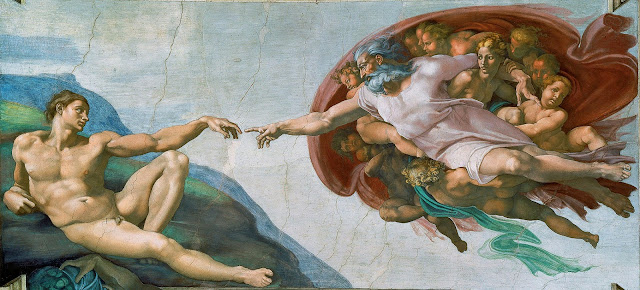domingo, 10 de enero de 2016
jueves, 7 de enero de 2016
CUADRO XI
MIGUEL ÁNGEL, The Creation of Adam (c. 1511)
|
Characteristics of this picture
|
|
Name
|
The
creation of Adam
|
Artist
|
Michelangelo
|
Year
|
1511 / 12
|
Type
and dimensions
|
Fresco
280 cm × 570 cm
|
Location
|
Sistine
Chapel (Vatican City)
|
"God created man in his own image, in the image of God he created him" (Genesis 1: 26-27).
The Creation of Adam is a fresco painting by Michelangelo, which forms part of the Sistine Chapel's ceiling, painted c. 1511–1512. It
illustrates the Biblical creation narrative from Book of the Genesis in which God breathes life into Adam , the
first man. The fresco is part of a complex iconographic
scheme and is chronologically the fourth in the series of panels depicting
episodes from Genesis. It is the most well-known of the Sistine Chapel fresco
panels, and its fame as a masterpiece of art is rivalled only by Leonardo da Vinci´s Mona Lisa.
The image of the near-touching hands of God
and Adam has become iconic of humanity and has been reproduced in countless imitations and parodies.Leonardo
da Vinci's Last Supper and Michelangelo's
Creation of Adam are the most replicated religious paintings of all time.
Suscribirse a:
Comentarios (Atom)


